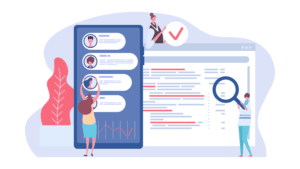
In contrast, a manufacturing company might have a more extensive inventory and more substantial tangible assets like machinery. The examples include long-term loans, bonds payable, and deferred tax liabilities. If you’re working with multiple reporting periods or need to standardize how different teams report balance sheet items, this free Excel balance sheet template can help. It includes Actuals, Plans, and Forecasts in the same structure – with auto-calculated ratios and clean monthly views built in. Track business assets, liabilities, and equity with this free online balance sheet template.
Notes to the Financial Statements

Classified financial reporting also aligns with how Liability Accounts managers monitor business segments. By breaking down each asset by subcategory, you can more easily identify if you are missing any assets from your calculations. Add up the total to determine your total assets, which appears as its own line item on the business balance sheet.

What does a classified balance sheet differ from?
- Assets are classified as current due to their liquid nature and the expectation that they will be converted into cash within a short period.
- Fixed asset typically has a lifespan of several years, so they are not classified as current assets.
- The long-term investments subsection includes stocks, bonds and other securities.
- This structure helps the management decide whether they have enough liquid resources to fund the expansion or if they’ll need external financing.
- Again, the balance sheet would be unchanged except for the equity section; the equity section would be divided into separate accounts for each partner (representing each partner’s residual interest in the business).
- Lower numbers indicate a business powered more by internal resources, which can suggest stability.
This allows investors to see how each type of equity contributes to the overall financial strength of the company. You can prepare the balance sheet in either the classified or unclassified format. In general, buyers interested in your business will also want to see the last three years of financials, so it’s important to understand how to prepare them before listing your business. Generally speaking, a classified balance sheet will be more useful in almost every scenario. If you’re not sure what a classified balance sheet is, you’re in the right place.
- Let’s talk about why getting cozy with classified balance sheets isn’t just smart—it’s absolutely essential for steering your business toward success.
- It reflects the ownership interest in the company and is also known as shareholders’ equity or net worth.
- The more customizable and configurable your technology, the more you can aggregate the data into classifications for management.
- However, overall, current asset items are still relatively more liquid in nature than the fixed assets or intangible assets.
- Classified balance sheets provide a granular view of a company’s financial standing, allowing for more in-depth analysis.
Essential validation steps:

Here, we encapsulate the key points covered and reflect on the importance of mastering classified balance sheets for all stakeholders involved. An unclassified balance sheet, also known as a traditional balance sheet, presents the company’s assets, liabilities, and equity without breaking them down into subcategories. It provides a straightforward snapshot of a company’s financial position, but it lacks the detailed organization found in a classified balance sheet. Management utilizes classified balance sheets for cash flow planning, capital allocation, and long-term strategic decisions. By understanding classified balance sheet the breakdown of current and non-current assets and liabilities, they can better plan for the company’s financial needs and growth opportunities.
- By leveraging intelligent reporting tools, we help businesses maintain classified balance sheets with ease, offering a range of services like financial analysis, audit preparation, and more.
- As with a standard balance sheet, a classified balance sheet includes assets, liabilities, and owner’s equity.
- We offer comprehensive financial services, from bookkeeping and auditing to financial planning and analysis.
- Treasury stock represents shares that the company has repurchased from investors.
- Our rigorous editorial process includes editing for accuracy, recency, and clarity.
- The acquisition of the fixed assets category can be financed through long-term debt or equity.
Exploring the Differences Between a Classified and Unclassified Balance Sheet

Like the lungs that must constantly exchange gases to sustain life, these represent the immediate claims contra asset account against current assets and directly impact working capital calculations. Current Assets represent resources that will convert to cash or be consumed within one operating cycle or one year, whichever is longer. Like blood flowing through arteries, these assets maintain the company’s day-to-day operations. This seemingly simple organization unlocks powerful insights about liquidity, solvency, and working capital management that executives need for strategic decision-making.
How Small Businesses Use AI: Examples, Statistics & Challenges
Finally, there are many possible things of value that are not recorded on the balance sheet. Internally generated assets and the firm’s human capital are two common examples. Internally generated assets can be anything from a website, a process, to an idea.
Case Study: Analysis of a Real Company’s Classified Balance Sheet
Long-term accounts are assets providing value beyond a year, like fixed assets, and long-term liabilities such as bonds payable. In simple terms, classified balance sheets give a clearer view of a company’s financial health by organizing its financial information neatly. This organization helps everyone, from the company’s managers to investors and creditors, quickly understand the company’s financial status, making it easier to make decisions for the future or about investing. Unclassified balance sheets, while simpler, don’t provide this level of detail, making it tougher to get a quick understanding of the company’s finances. Throughout this article, we explored the definition, purpose, components, advantages, and limitations of a classified balance sheet.






0 Comment